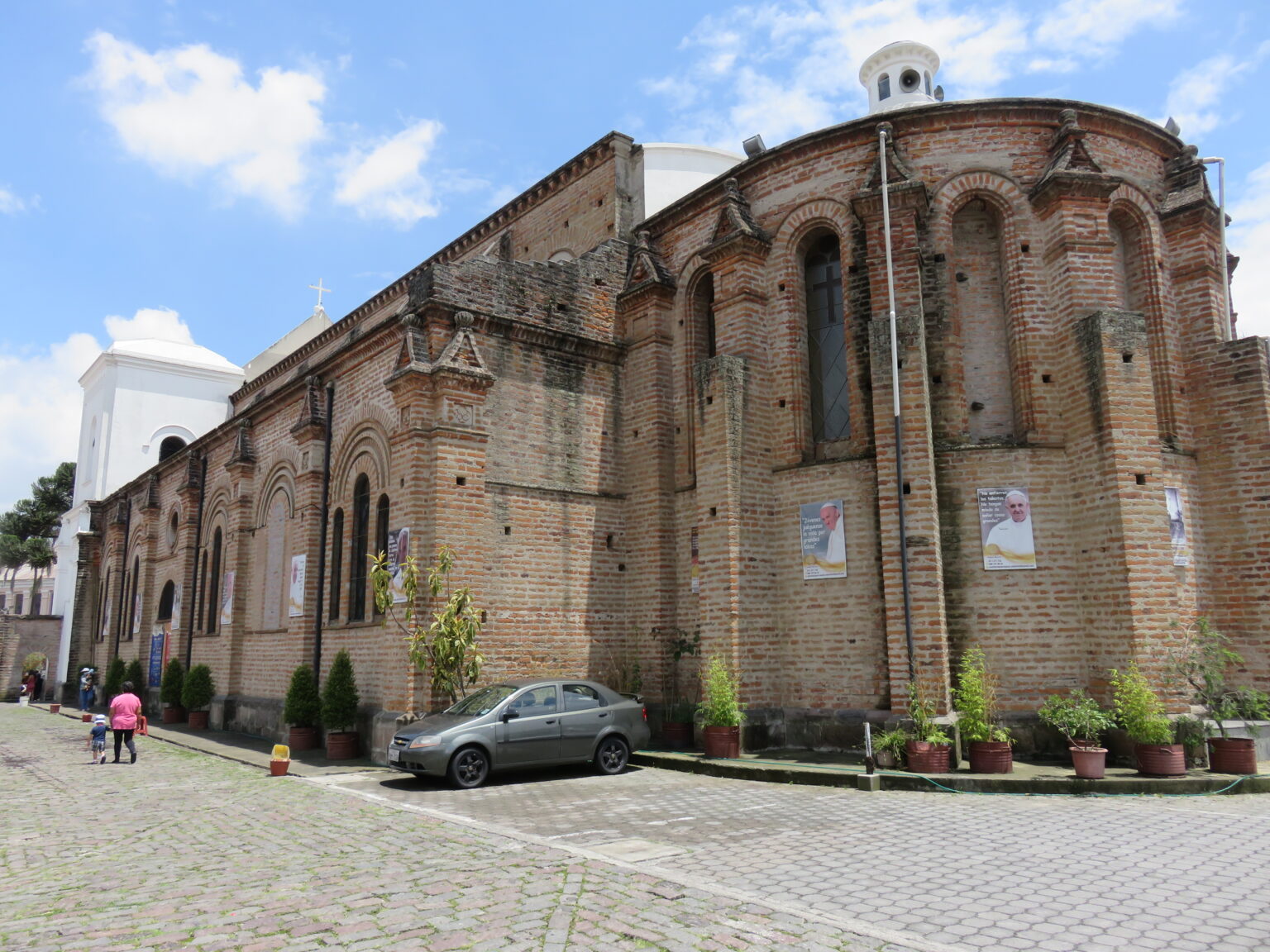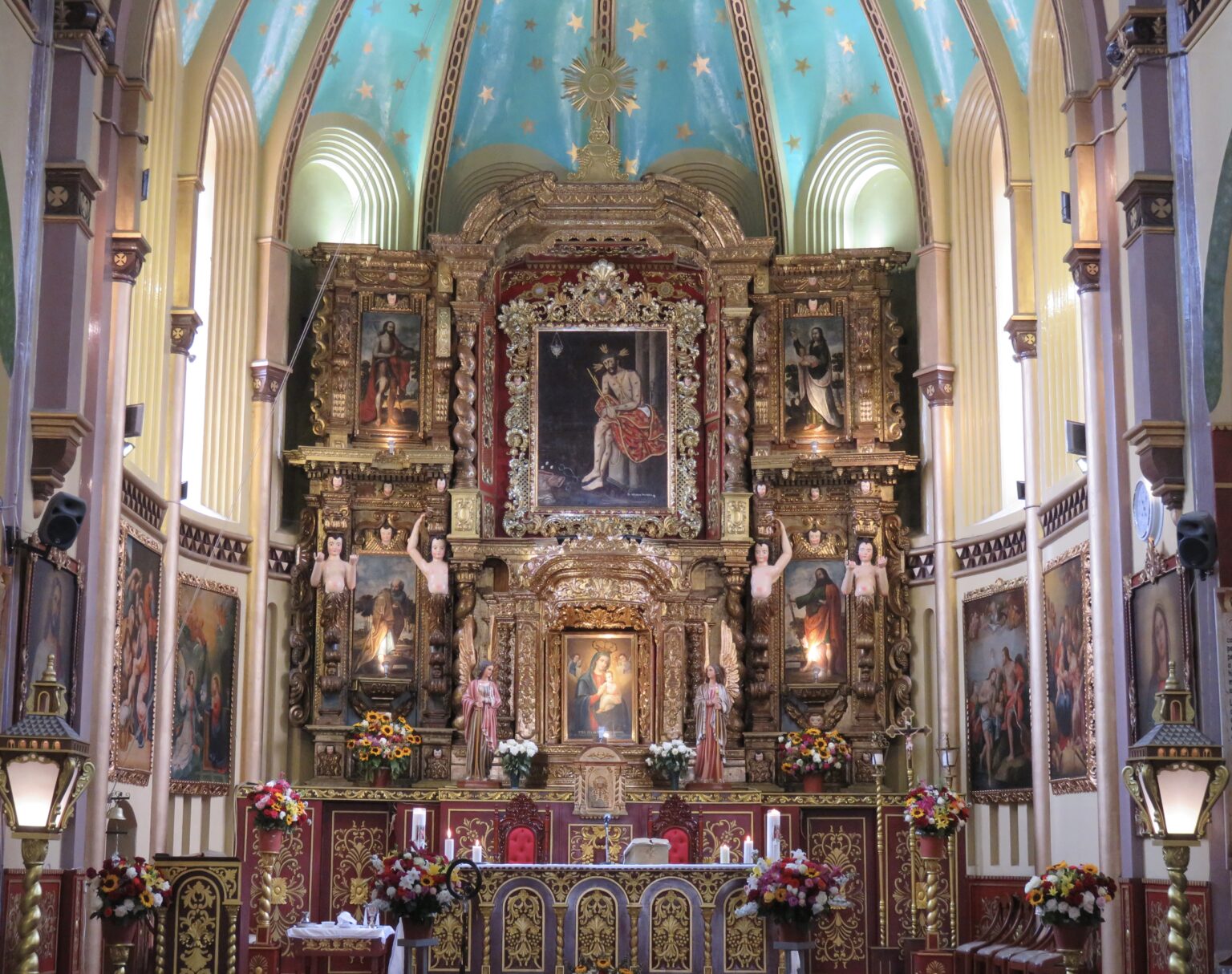Español
La Iglesia de San Sebastián fue construida a inicios del siglo XVII, alrededor de 1618, en el sector sur del centro histórico de Quito. Nació como una parroquia destinada a atender a los barrios populares y a las comunidades indígenas y mestizas de la zona, convirtiéndose en un punto clave de la vida religiosa y social del sector. A lo largo del tiempo, ha sido testigo de diversos procesos históricos y culturales, manteniendo su importancia dentro de la tradición quiteña.
El templo presenta una fachada sencilla de estilo barroco popular, construida con piedra y mampostería. Su portada está adornada con elementos sobrios, enmarcada por columnas y un frontón triangular que refleja la influencia colonial. La torre campanario se eleva con proporciones modestas, lo que le otorga un carácter más cercano y comunitario en comparación con las grandes iglesias del centro histórico.
El interior de San Sebastián conserva una estructura de nave única, decorada con retablos barrocos recubiertos en pan de oro y elementos artísticos propios de la Escuela Quiteña. Sus altares laterales muestran imágenes de santos populares, muy vinculados a la devoción local. El techo artesonado y la decoración de las capillas refuerzan la calidez del templo, que combina sencillez arquitectónica con gran valor espiritual y cultural.


English
Early History
The Church of San Sebastián was built in the early 17th century, around 1618, in the southern sector of Quito’s historic center. It began as a parish church serving the working-class neighborhoods and the area’s Indigenous and mestizo communities, becoming a key center of the area’s religious and social life. Over time, it has witnessed various historical and cultural processes, maintaining its importance within Quito’s tradition.
Exterior Architecture
The church features a simple façade in the popular Baroque style, built with stone and masonry. Its portal is adorned with sober elements, framed by columns and a triangular pediment that reflects the colonial influence. The bell tower rises with modest proportions, giving it a more intimate and communal feel compared to the large churches of the historic center.
Interior Architecture
The interior of San Sebastián retains a single-nave structure, decorated with Baroque altarpieces covered in gold leaf and artistic elements typical of the Quito School. Its side altars display images of popular saints, closely linked to local devotion. The coffered ceiling and the decoration of the chapels reinforce the warmth of the church, which combines architectural simplicity with great spiritual and cultural value.